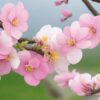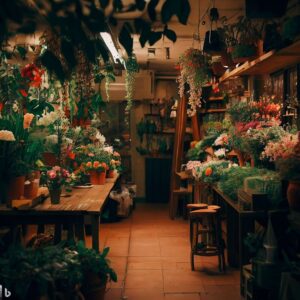Embrace the beauty of the season with our exquisite Chinese spring flower bouquet. Delight in a vibrant array of blooming flowers that capture the essence of spring’s renewal. Perfect for gifting or brightening up your space. Order now and celebrate the freshness of spring with every petal.
Introduction
Welcome to a world of enchanting beauty and floral wonder with our captivating Chinese spring flower bouquet. As the seasons transition, nature awakens in a symphony of colors and fragrances, and our meticulously crafted bouquet is a true embodiment of this rejuvenation. Each bloom has been carefully selected to reflect the essence of spring in China, where tradition and nature harmoniously intertwine. Join us in exploring the delicate charm and timeless elegance of our Chinese spring flower bouquet, a testament to the artistry of the season.
The Significance of Spring Flowers in Chinese Culture
In the vibrant tapestry of Chinese culture, spring flowers hold a special place, embodying profound symbolism and rich traditions. As the harsh grip of winter loosens its hold, and the world around begins to awaken, the emergence of spring flowers marks a time of renewal, hope, and cultural significance.

Symbolism of Spring Flowers:
Spring flowers in Chinese culture are laden with meanings that transcend their physical beauty. They serve as metaphors for various virtues, emotions, and aspirations. Plum blossoms, for instance, symbolize resilience and perseverance. These delicate blooms thrive even in the harshest of conditions, embodying the spirit of overcoming adversity.
Cherry blossoms, with their ephemeral beauty, evoke themes of transience and the fleeting nature of life. They remind us to appreciate the present moment while recognizing the inevitability of change. The peony, known as the “king of flowers,” represents wealth, prosperity, and honor. Its lush, vibrant petals are associated with fortune and success.
Cultural Celebrations:
The celebration of spring flowers is deeply ingrained in Chinese festivities. The Lunar New Year, also known as the Spring Festival, is a prime example. Homes are adorned with various blossoms and plants, each carrying its own auspicious meaning. Kumquat trees symbolize prosperity, while narcissus flowers represent good fortune and prosperity. These decorations not only beautify spaces but also imbue them with positive energy for the coming year.
The Qingming Festival, or Tomb-Sweeping Day, also sees the use of spring flowers. Families visit the graves of their ancestors, offering flowers as a sign of respect and remembrance. This practice highlights the cyclical nature of life and death, as well as the enduring connection between generations.
Artistic Expression:
Spring flowers have inspired countless artists, poets, and writers throughout Chinese history. Paintings of blossoms capture not only their visual beauty but also the deeper meanings they hold. These artworks often convey philosophical concepts, such as the interconnectedness of nature and human existence.
Harmony with Nature: In traditional Chinese thought, humans are considered an integral part of the natural world. Spring flowers represent the harmony between humans and nature, reminding us of our dependence on the Earth’s cycles and the importance of stewardship.
Elements of a Chinese Spring Flower Bouquet
Crafting a Chinese spring flower bouquet is an art that combines nature’s beauty with cultural symbolism, resulting in a captivating arrangement that speaks volumes about the season and its significance. Every element carefully chosen and thoughtfully arranged carries its own meaning, contributing to the bouquet’s overall narrative.
1. Plum Blossoms:
Plum blossoms are a quintessential element of a Chinese spring flower bouquet. Symbolizing resilience and perseverance, these delicate blooms are among the first to appear, even in harsh winter conditions. Their presence represents the triumph of life over adversity and the promise of renewal.
2. Cherry Blossoms:
Cherry blossoms, with their ethereal charm, embody the fleeting nature of life. Their short-lived bloom is a metaphor for the impermanence of all things. In Chinese culture, they remind us to cherish the present moment while acknowledging the ever-changing cycles of existence.
3. Peonies:
Known as the “king of flowers,” peonies are a symbol of wealth, honor, and prosperity. Their lush petals and captivating fragrance make them a beloved element in spring bouquets. As a representation of fortune and success, peonies infuse the bouquet with positive energy and aspirations for the future.
4. Narcissus:
Narcissus flowers, often associated with the Lunar New Year, symbolize good fortune and prosperity. Their elegant and graceful form adds depth to the bouquet’s composition, inviting thoughts of auspicious beginnings and the potential for growth.
5. Bamboo:
Bamboo is a versatile addition that embodies resilience and flexibility. Its tall, straight stems are a metaphor for upright character and strength in the face of challenges. Adding bamboo to the bouquet imparts a sense of balance and harmony.
6. Lotus Blossom:
The lotus blossom is a symbol of purity and enlightenment in Chinese culture. Rising from the mud to bloom in pristine beauty, it signifies spiritual growth and transformation. Including lotus blossoms in the bouquet adds a layer of depth, reminding us of the quest for inner wisdom.
7. Orchids:
Orchids represent refinement, elegance, and friendship. With their intricate petals and diverse colors, orchids bring an air of sophistication to the bouquet. Their presence reflects the importance of cultivating meaningful connections.
8. Cultural Vases:
The vessel that holds the bouquet is just as important as the flowers themselves. Chinese ceramic vases, often adorned with intricate designs and vibrant colors, contribute to the bouquet’s aesthetic and cultural context. These vases may feature traditional motifs, adding another layer of symbolism to the arrangement.
9. Color Palette:
The choice of colors in a Chinese spring flower bouquet is deliberate. Red symbolizes luck and happiness, while gold and yellow represent wealth and prosperity. White embodies purity, and pink signifies love and friendship. The harmonious blend of these hues enhances the bouquet’s message and evokes a sense of harmony.
Crafting a Chinese Spring Flower Bouquet
The art of crafting a Chinese spring flower bouquet is a captivating blend of nature’s elegance and cultural symbolism. This intricate process involves selecting, arranging, and presenting a harmonious collection of blossoms that not only capture the essence of the season but also embody the profound meanings deeply rooted in Chinese traditions.

1. Selecting the Right Flowers:
At the heart of every Chinese spring flower bouquet lies the careful selection of blooms. Each flower chosen holds significance beyond its aesthetic appeal. Plum blossoms, renowned for their ability to bloom amidst adversity, symbolize endurance and vitality. Cherry blossoms, known for their fleeting beauty, evoke the transient nature of life. Peonies represent prosperity and honor, while narcissus embodies luck and new beginnings. These flowers are carefully chosen to convey a narrative that resonates with the viewer.
2. Cultivating Symbolic Harmony:
Crafting a Chinese spring flower bouquet is a journey of harmonizing symbolism. The arrangement aims to convey a story that aligns with the values and beliefs of Chinese culture. The delicate balance of plum and cherry blossoms, paired with the opulent peonies and the hopeful narcissus, creates a tapestry of emotions and virtues that mirror the intricacies of life.
3. Arranging with Care:
The arrangement of the bouquet is an art in itself. The taller, graceful stems of plum and cherry blossoms serve as the backbone, lending a sense of upward momentum. The round, full petals of peonies add volume and depth, while the elegant posture of narcissus contributes a touch of elegance. The juxtaposition of these flowers reflects the duality of existence – the contrast between struggle and beauty, impermanence and abundance.
4. Embracing Cultural Traditions:
Incorporating cultural elements is crucial in crafting an authentic Chinese spring flower bouquet. Traditional Chinese ceramic vases, adorned with intricate patterns and vivid colors, provide a vessel that echoes the rich history and artistic heritage. This interplay between the contemporary arrangement and the timeless vase creates a bridge between past and present.
5. Color Palette:
Color is a language of its own in the realm of Chinese spring flower bouquets. Red, symbolizing joy and luck, finds companionship with golden yellows that represent wealth and prosperity. Soft pinks convey sentiments of love and friendship, while whites embody purity and new beginnings. The harmonious blending of these colors enhances the bouquet’s visual impact and resonates with cultural significance.
6. Expressing Cultural Identity:
Crafting a Chinese spring flower bouquet is more than arranging flowers; it’s an expression of cultural identity. The bouquet tells a story of nature’s cycles and human aspirations, drawing from a wealth of wisdom accumulated over generations. It’s a tribute to the profound connection between people and the natural world, an artful celebration of the spring season’s arrival, and a window into the beauty of Chinese culture.
Tools and Materials for Creating Chinese Spring Flower Bouquets
Crafting a Chinese spring flower bouquet is a meticulous art that demands the right tools and materials to bring its beauty and symbolism to life. From the selection of flowers to the final arrangement, each step requires careful consideration and precision. Here’s a comprehensive guide to the tools and materials essential for creating these exquisite bouquets:
1. Flowers:
The heart of any bouquet is its flowers. When crafting a Chinese spring flower bouquet, choose blooms that carry cultural symbolism and seasonal significance. Plum blossoms, cherry blossoms, peonies, narcissus, and other traditional flowers should be the foundation of your selection, each representing different virtues and emotions.
2. Floral Shears:
A good pair of floral shears is essential for precise and clean cuts. These shears ensure that stems are trimmed evenly and at the appropriate angles, allowing the flowers to absorb water effectively and prolong their freshness.
3. Vase or Container:
Select a vase or container that complements the style and cultural context of your Chinese spring flower bouquet. Traditional Chinese ceramic vases, often adorned with intricate patterns and vibrant colors, add an authentic touch and enhance the overall aesthetic.
4. Water and Preservatives:
Freshly cut flowers require water to stay vibrant and healthy. Use clean, room-temperature water in your vase and consider adding floral preservatives to extend the life of the blooms.
5. Floral Foam or Frog Holder:
For securing and arranging stems, floral foam or a frog holder can be helpful. Floral foam provides a stable base and allows you to control the height and position of each flower. A frog holder consists of metal pins that hold stems in place, providing support and structure.
6. Floral Tape or Wire:
Floral tape or wire is useful for creating bundles of flowers or securing delicate stems. It helps in maintaining the desired arrangement and prevents flowers from shifting.
7. Foliage and Greenery:
Incorporate foliage and greenery to add texture and depth to your bouquet. Bamboo leaves, ferns, or other greens can create a lush background that enhances the vibrancy of the blossoms.
8. Pruning Knife or Garden Scissors:
A pruning knife or garden scissors can be used for larger stems and tougher branches. These tools allow you to make clean cuts even on thicker plant materials.
9. Floral Design Books or Resources:
Having access to floral design books or online resources can offer inspiration and guidance in creating a visually appealing and culturally significant Chinese spring flower bouquet. They can provide insights into traditional arrangement techniques and modern design ideas.
10. Gloves and Apron:
Protect your hands and clothing from thorns, sap, and dirt by wearing gardening gloves and an apron while working with flowers.
11. Cultural Accessories (Optional):
Consider adding cultural accessories like ribbons, silk fabric, or traditional ornaments that align with the theme of your bouquet and enhance its cultural resonance.
12. Patience and Creativity:
Above all, a patient and creative mindset is essential. Crafting a Chinese spring flower bouquet is an art that requires time, attention to detail, and a genuine appreciation for the cultural and natural elements involved.
FAQ’s
What is the history of Chinese floral art?
Chinese floral art has deep historical roots, dating back to ancient rituals and religious practices that incorporated flowers.
Which flowers are considered unlucky in Chinese culture?
White flowers are often associated with funerals and are considered unlucky in Chinese culture due to their association with death.
Can I create a Chinese spring flower bouquet outside of spring?
Absolutely! While spring is symbolic, Chinese Spring Flower Bouquets can be created and enjoyed year-round.
What are some famous Chinese flower festivals?
The Luoyang Peony Festival and the Harbin International Ice and Snow Sculpture Festival feature stunning floral displays.
Is there a specific color scheme for these bouquets?
While there’s no rigid scheme, vibrant reds, pinks, and golds are often used to evoke joy, luck, and prosperity.
Conclusion
As the delicate petals of the Chinese Spring Flower Bouquet unfurl, they tell a story of tradition, symbolism, and boundless beauty. These floral masterpieces not only enrich the aesthetics of their surroundings but also offer a glimpse into the rich cultural tapestry that is China. So, whether you’re celebrating a joyous occasion or simply embracing the beauty of nature, a Chinese Spring Flower Bouquet is a timeless expression of elegance and culture.







